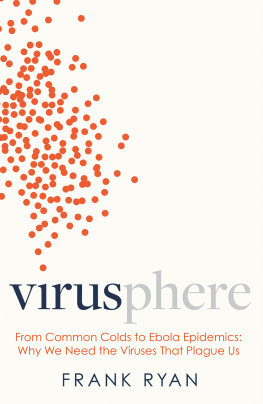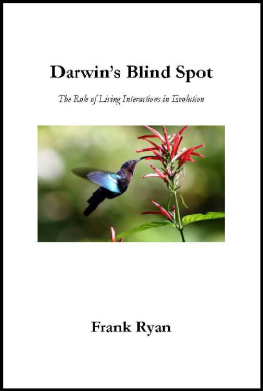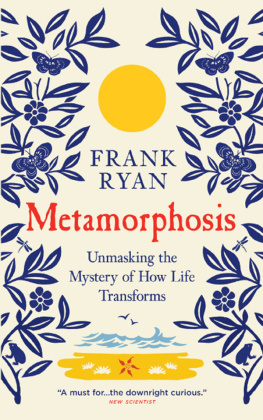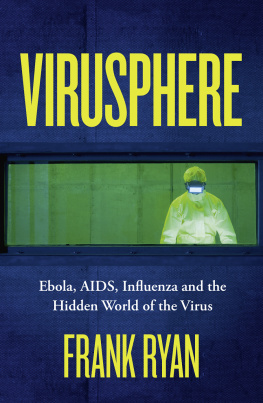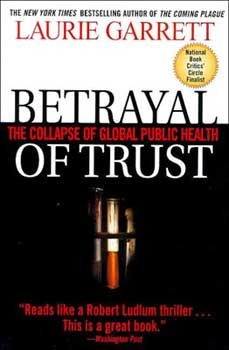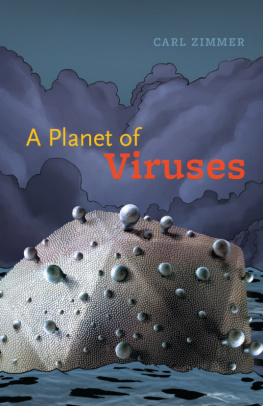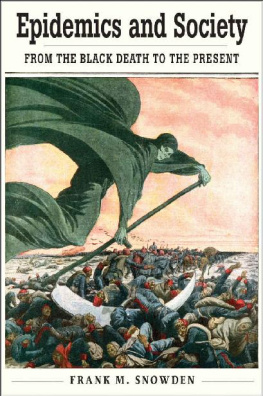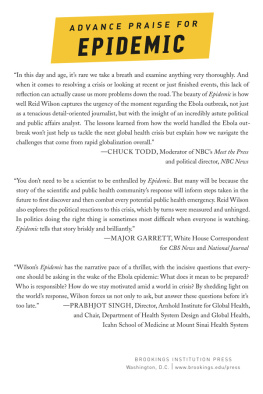Australia
HarperCollins Publishers (Australia) Pty. Ltd.
Level 13, 201 Elizabeth Street
Sydney, NSW 2000, Australia
http://www.harpercollins.com.au
Canada
HarperCollins Canada
Bay Adelaide Centre, East Tower
22 Adelaide Street West, 41st Floor
Toronto, ON, M5H 4E3, Canada
http://www.harpercollins.ca
India
HarperCollins India
A 75, Sector 57
Noida, Uttar Pradesh 201 301, India
http://www.harpercollins.co.in
New Zealand
HarperCollins Publishers (New Zealand) Limited
P.O. Box 1
Auckland, New Zealand
http://www.harpercollins.co.nz
United Kingdom
HarperCollins Publishers Ltd.
1 London Bridge Street
London, SE1 9GF
http://www.harpercollins.co.uk
United States
HarperCollins Publishers Inc.
195 Broadway
New York, NY 10007
http://www.harpercollins.com
Contents
William Collins
An imprint of HarperCollinsPublishers
1 London Bridge Street
London SE1 9GF
WilliamCollinsBooks.com
This eBook first published in Great Britain by William Collins in 2019
Copyright Frank Ryan 2019
Frank Ryan asserts the moral right to be identified as the author of this work.
A catalogue record for this book is available from the British Library.
All rights reserved under International and Pan-American Copyright Conventions. By payment of the required fees, you have been granted the non-exclusive, non-transferable right to access and read the text of this e-book on-screen. No part of this text may be reproduced, transmitted, down-loaded, decompiled, reverse engineered, or stored in or introduced into any information storage and retrieval system, in any form or by any means, whether electronic or mechanical, now known or hereinafter invented, without the express written permission of HarperCollins.
Source ISBN: 9780008296674
eBook Edition March 2019 ISBN: 9780008296698
Version: 2019-02-21

I would like to thank my editors,
Myles Archibald and Hazel Eriksson,
and my agent, Jonathan Pegg,
for their support of my writing this book
We all play hideous games with each other.
We step inside each others chalk circles.
Anthony Hopkins
The Mysterious World of the Human Genome
Virolution
Tuberculosis: The Greatest Story Never Told
Virus X
Darwins Blind Spot
Metamorphosis: Unmasking the Mystery of How Life Transforms
Originally qualified as a doctor, Frank Ryan is now one of the pioneers of the role of viruses in evolution. He was recently made Honorary Research Fellow in the Department of Animal and Plant Sciences at the University of Sheffield, with the express purpose of developing his evolutionary concepts and helping to translate evolutionary science into medicine. He is the author of four general books, including a New York Times nonfiction book of the year, Tuberculosis: The Greatest Story Never Told.
A fascinating and long overdue examination of viruses from what they are and what they do, to the vital role they have played in human evolution.
What are viruses? Do they rely on genes, like all other forms of life? Do they follow the same patterns of evolution as plants and animals?
Frank Ryan answers these questions and many more in a sweeping tour of illnesses caused by viruses. For example, the common cold, measles, chicken pox, herpes and mumps, rubella, as well as less familiar examples, such as rabies, breakbone fever, haemorrhagic fevers like Ebola, and virus-induced cancers. Along the way, readers will learn about the behaviours and ultimate goals of viruses, gaining a deeper understanding of their importance in relation to the origins and the evolution of life, as well as the ways viruses have changed us at the most intimate level, to help make us quintessentially human.
What springs to your mind when you sit back and consider viruses? I am altogether aware that even if you come, as will many of my readers, from a non-scientific background, you will likely be uncertain as to the strange and ill-definable nature of viruses. Even among scientists, viruses are among the most enigmatic of the biological entities that are to be found on our precious blue-girdled planet. Certainly, there is a good deal of misinformation about them. You might, for example, be apt to confuse them with bacteria, a confusion that is not helped by the fact that we doctors caused this confusion in the first case by lumping two radically different entities together as the microbes that are the root cause of infectious diseases.
Viruses frighten us. They elicit a primal fear of the unknown. They are capable of crashing through our natural barriers and defences, turning healthy cells into microscopic factories to produce exponential numbers of daughter viruses. These swarm through the bloodstream, drawing the attention of the immune system. This provokes our own white blood cells and other immune defences to become an aggressive reactionary force, fixated on annihilating the invaders, regardless of the devastation in their wake indeed our very own immune system contributes to many of the familiar symptoms of the resultant illness, from runny noses to violent, bloody haemorrhages. In effect, every infection becomes a pitched battle that will determine the outcome for us, the host. As we come to know viruses better, we discover that they have also come to know us intimately, taking advantage of our very behaviour to facilitate their infectiousness and spread among us. All in all, that is rather scary. Especially so when we consider that some of those viruses include some of the most dangerous entities on the planet, entities eminently capable of making us very sick indeed even killing us.
It is hardly surprising that we should fear them and consider them an epitome of menace, perhaps even evil. But contrary to what we might think about viruses, they are not driven by malice. Their ultimate goal, just like that of all living organisms, is simply to survive and multiply, thereby ensuring the success of their kind. Thats all very nice to know but this lack of malice is hardly a comfort to us when we are infected by a virus. It is only natural in such circumstances that we might resent viruses and what they might do to us. It is equally natural that we should also feel the need to protect those we love from viruses while knowing that, if and when one of them comes along, it will arrive among us, unseen and unknowable, causing damage and pain among us, even to the most innocent, without feeling or rational explanation.
We are comforted by the knowledge that there are vaccinations available to protect us and our families from these viruses. But that same misinformation about various different vaccination campaigns has sown confusion among us. Meanwhile, there appears to be little to nothing that we can do about certain epidemic varieties, such as the norovirus or the common cold, which sweep through our populations as common experiences, albeit experiences we would rather avoid, provoking altogether negative associations in relation to viruses. Is it any surprise that we are inclined to wonder what other capacity for mischief viruses are capable of? You might well take the question further and wonder aloud: what is the purpose of these minuscule entities? Wouldnt our world be a good deal better off if these dratted parasites were simply eliminated from the scene, never to bother us any more?

